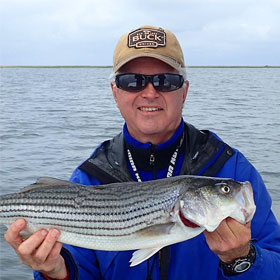Small-Boat Handling: 10 Tips On How to Drive a Boat Safely
By Ken Schultz
Jun 14, 2023
No brakes, no stop signs, and sometimes no indication of hazards make it imperative to distinguish how to drive a boat in a safe manner
Every year you read or hear about boating accidents, many of which are preventable. You can avoid becoming a boating-accident statistic if you know how to drive a boat in a safe manner, just as you do when driving an automobile on the road. How to drive a boat differs with hull shape, size, displacement, and engine power, and boats don’t all drive alike, especially in rough seas. Putting aside the basic issues of boat safety equipment and PFDs, here are some basics to keep in mind:
1. Don’t drink alcohol and operate a boat, or allow anyone who has been drinking alcohol on your boat to operate it (the same applies to recreational drugs). This is the first, but often ignored, rule of boat operation basics. It should be viewed the same as with driving an automobile.
2. Don’t overload the boat, that is, carry too much weight in the form of passengers and/or cargo/gear. A heavily laden small boat doesn’t handle as well as one properly weighted.
3. Powerboats have an ignition safety cutoff switch (aka kill switch) attached via lanyard to the ignition key and to the belt or PFD of the operator; it should be worn at all times.
4. Aside from reckless boat operation, some chief causes of boat-handling concerns are dams, dangerous currents, navigational hazards, anchoring, boat docking, and winds or storms. Most of these can be minimized by prudent boat operation and good boat-handling skills, but it’s important to learn to recognize situations that can present a problem and to not underestimate them.
5. Boating at night brings added navigation and boat-handling concerns, and a greater need for caution.
6. In traffic, such as in a busy channel or harbor, you have to drive defensively, no matter how experienced you are.
7. In all places, but especially large bodies of water and big rivers, prudent boat handling requires not just evaluating what lies ahead on the surface, but what may lie below. Reefs, sandbars, rockpiles, and other objects are commonly present in many water bodies, and not necessarily marked; boaters must be sure of their path of travel, or proceed cautiously otherwise.
8. Strong winds often cause a problem for boaters, not only in navigating but also in boat docking and in retrieving a boat at a launch. Sometimes, coping with the wind isn’t prudent, and the sensible thing to do is head for port. This is especially so if the winds appear to be building. Don’t wait for the worst conditions to arrive. The same applies to storms.
9. You can only become familiar with the handling characteristics of a particular boat through experience and operating at different speeds. You could read a manual on how to drive a boat, but it would not take the place of experience with your boat.
10. Without brakes, stopping a boat is vastly different than stopping an automobile. Some amount of reverse thrust is almost always necessary, as is taking a slow (near idle) approach to another boat, dock, boat trailer, etc.









